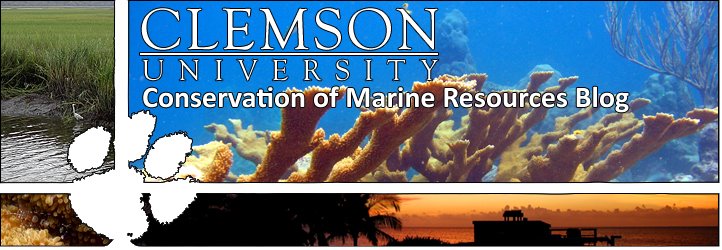Over Fall Break, I had an amazing opportunity to do field
work in the Florida Keys with the Childress lab. After working with this crew
all summer, I was so excited to return with them at the end of October. Getting
back on our boat and in the warm Keys water almost felt like coming home. The
difference this time was that we were on a new mission and we had a big time
crunch to get everything done. For the entire week, our goal was to capture
four Stoplight parrotfish and do underwater surgery to insert a tag that tracks
their movement.
Our graduate student, Kylie spent weeks preparing for this
big endeavor by researching the best nets and techniques to capture parrotfish,
and also continuously practiced how to do a parrotfish surgery. Through her
diligent preparation, we were ready to drive down to the Keys! We left on a
Friday afternoon and arrived in the middle Keys on Saturday. With amazing
weather on our side, we started off our week doing the normal surveys that were
so familiar from the summer – and we got them completed in record time. On
Monday, we were able to meet with several members of the fish crew that work
for Florida Fish and Wildlife Conservation Commission. Having previous
experience and a wealth of knowledge, they were incredibly helpful in walking
us through the process of capturing and tagging our parrotfish. At the end of
the day, we felt ready to take on the challenge.
The next day, we took the boat to Coral Gardens, our most
frequently used research site, and got the various nets and tools we needed.
The best way to learn is through trial and error and we certainly lived up to
that statement. Our first day was unsuccessful at catching a parrotfish so we
decided to try and catch one at night. Parrotfish go to sleep when it gets dark
so we predicted it would be easier to catch one then. Fortunately, this proved
to be correct and it did not take long before we were able to catch our first
Stoplight! It took amazing teamwork to get the fish cornered and captured in
the net. Then Kylie set about doing the work she put so much practice towards.
From my eyes, she was calm and collected the entire time and handled the surgery
as if she had done it hundreds of times. Once she successfully completed the
surgery, the moment of truth came when she released the fish from her grasp. It
immediately sunk to the ground and our hearts sank with it. After a little time
and encouragement, the fish finally started swimming semi-normally and went on its
way. We were overjoyed! When we got back on the boat all of us were in a
complete state of giddiness and celebratory high-fives went all around. That
was the best night we had in the Keys because we all sat on the boat, staring
at the stars with complete elation at the success of our first parrotfish
tagging. The next day, we were back at it and caught one more parrotfish that
day, then two more the next night. Our team only got better with time and we
reached our goal of tagging four parrotfish!
On the last day, we got rewarded for our hard work by
spending the day goofing off in Key West. We got to see the legendary haunted
doll named Robert, walk through shops, dress up like pirates and play with a
parrot. You bond so much with your research team all week and it is fun to step
away from work for a day to just enjoy each other’s company. Our Fall Break in
the Keys taught me so much about teamwork because we all had to work together
to complete a difficult task underwater and without talking – talk about a
challenge! However, we all stayed very in-tuned to what each other was doing so
we could assist one another at a moment’s notice. I loved the opportunity we
had to collaborate with FWC. Working with people who are professionals in this
field was incredible because I aspire to do something similar to them. We got
to see what a day in the life of a marine biologist actually looks like and we
were able to watch them work in the field. This experience really inspired me
in establishing my career goals. I already knew I wanted to go to graduate
school for marine conservation but this helped give me more direction in what I
wanted to pursue. I am very thankful because throughout the week Kylie mentored
me in the application process and really worked to help me be successful in my
future endeavors as a graduate student.
This trip was the highlight of my senior year so far – and that’s
saying a lot because we’re going to the National Championship, but our Keys
trip was still better. I got really great field experience, participated in an
amazing tagging experience, worked with FWC and bonded even more with our
research team. We worked hard but never forgot how to have fun throughout the
process.


